Well, we finally got to try out Jerry’s setup for backpacking with sleep apnea. We tested several different setups before heading out and finally decided on this one.
UPDATE March 14, 2025: We have found a new battery that was released late 2024 and have tested it for 200 miles on the Pinhoti Trail. This post has now been updated with his most current setup. For reference, he can get 16 hours (2 nights) out of this new battery bank. Even if we were to buy an additional one in order to get 4 nights, it would still be 1.5 pounds lighter than our original battery. His pressure on his travel CPAP is a 9.
I know there are a lot of opinions about backpacking with sleep apnea; some say to forego backpacking, some say they don’t use their CPAP while backpacking, and others don’t even have sleep apnea but want to give you their opinions LMAO. Jerry (Suspenders) has no choice but to use a CPAP.
The goal is to keep his full winter weight pack for 4-5 days below 30 lbs! He also has pretty bad back problems that require injections every 3-6 months, and his nerves burned about every six months. So, every single gram truly does matter to him.
Sleep Apnea Setup for Backpacking
Keep in mind this is what works for him. We are not doctors, and none of this is considered medical advice. For reference, his pressure was set at 9 when we tested.
CPAP Machine for Backpacking
We needed the absolute lightest CPAP machine we could find. Since the VA does not pay for a travel CPAP, we would have to pay out of pocket for it. We went with the ResMed Air Mini (they now make a Transend Micro that weighs 0.48 lbs). The mini weighs just over 1/2 pound at 0.66 pounds or 10.56 ounces (this does not include the mask, tube, or power supply). We ordered ours through CPAP.com (not sponsored) and had a great experience.
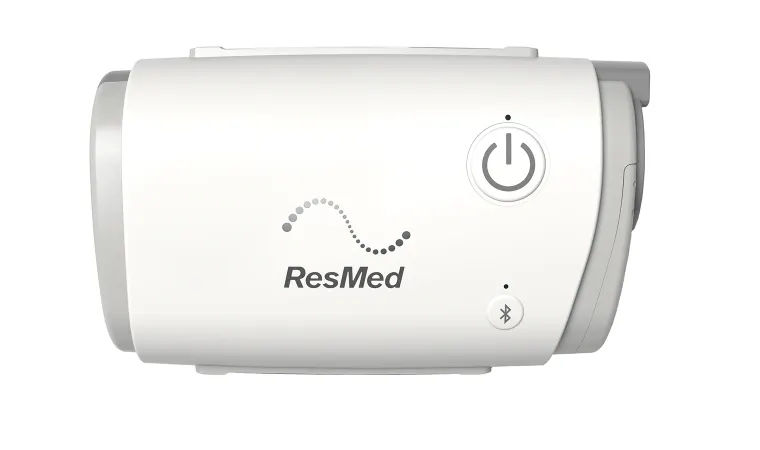
Features we like & Specifications
- Weighs only 10.56 ounces
- Automatic Pressure Adjustments
- Automatic Start / Stop
- Waterless Humidification System
- Bluetooth Capable
- Works with his mask, so we don’t have to buy additional masks
- Sound Level: 30 dBA
- Machine Dimensions: 5.4 in L x 3.3 in W x 2.1 in H
- Default Machine Settings: 4-20cm H2O
- Exhalation Relief: Yes
- Ramp Mode: Yes
- Max Altitude: 8500
- DC Capable: Yes
- Typical Electricity Consumption: 6.3 W
CPAP Accessories
Mask: Thankfully, this machine is compatible with the mask he already uses, the AirTouch F20. It weighs in at 3.8 oz (with headgear)
Hose: ResMed AirMini Tubing. The downside is that you have to use AirMini-specific tubing, which weighs 3.1 oz. or you can buy an adapter to use a hose you already have.
Waterless Humidifier Filter: Humid X F20. The filter weighs 0.2 oz
Battery Bank
We have tested multiple battery banks. The main issue was finding one that would last multiple nights (3-4) and not weigh a ton or be too bulky to carry. We also looked at price points to find the best deal. There are several well-known ones that the CPAP companies recommend, and while they are one pound each, we didn’t get the best weight or bang for our buck. We’d need 4 of them to compare to the original one we bought. So, in the long run, those would weigh more and cost A LOT more.
KEEP IN MIND: One of the main things you need to remember when talking to other backpackers who carry a CPAP is what pressure setting they use. Many of those who carry those popular brand-name one-pound battery banks and can get two to three nights out of them have very mild sleep apnea, meaning their pressure setting is really low. A low pressure setting uses less power. My husband can get a whopping six hours out of those popular one-pound battery banks.
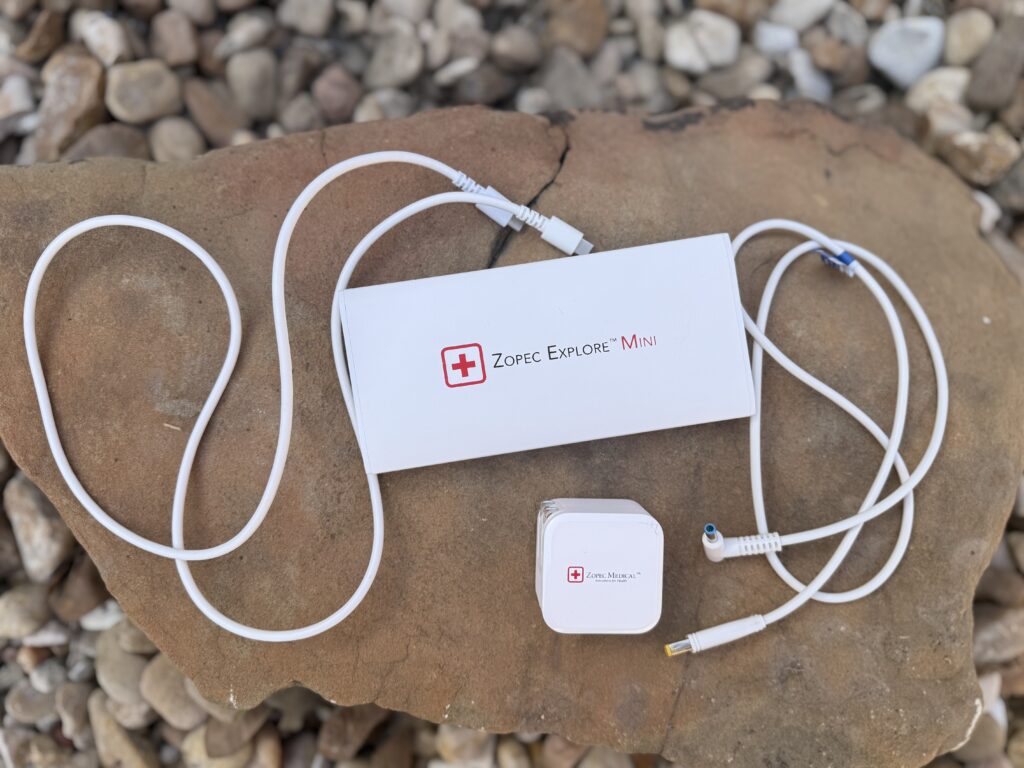
We initially went with the Easylonger ES720 (green version); they later came out with a different version of the ES720 (brown version) that includes cords for the CPAP, which helps lower the weight. You can click this link to see my full review of the green version and this link for the brown version. See below under Alternative Setups for more information on those.
However, in late 2024, a new CPAP battery called the Zopec Explore Mini was released. We found this by chance when we needed a replacement battery ASAP before leaving to do the Pinhoti Trail. After one last test of all our electronics, we noticed the Easylonger would not hold a full charge. I contacted the company, who offered to send a replacement at no cost. Unfortunately, it would not arrive in time, so they refunded us instead (they have amazing customer service). So I set out to see what I could find on Amazon, and ran across the Zopec Explore Mini. It seemed too good to be true, but I decided to go ahead and order it. It weighs one (1) pound, is as small as a 20,000 mAh battery bank or iPhone 16 Pro Max, and gives him 17 hours of run time (so two 8-hour nights).

Zopec Explore Mini
Cords & Power Supply
CPAP Cord: We use the cord that comes with the battery bank. This cord weighs 1.2oz.
Battery Bank Cord: The battery bank cord is a USB-C to USB-C cord that comes with the battery bank. We used this instead of buying a lighter cord for the best possible recharge time. The cord weighs 1.2oz.
Wall Plug: This CPAP battery comes with a 65w wall charger. We opted to use this instead of trying to find a lighter version to get the best possible recharge time. The wall charger weighs 3.7oz.
Total Weight
The weight below reflects a four 8-hour night setup with some hours left over, which would be two battery banks, the CPAP machine, mask, hose, all required cords, wall plug, and an Osprey Dry Bag to store it all in.
- The total weight of everything combined on my scale is 3 lbs 14oz, which means we are saving a pound over his original setup. If we chose to carry just one battery for a two-night outing (going in every third night), it would save him 2 pounds!

Zopec Explore Mini
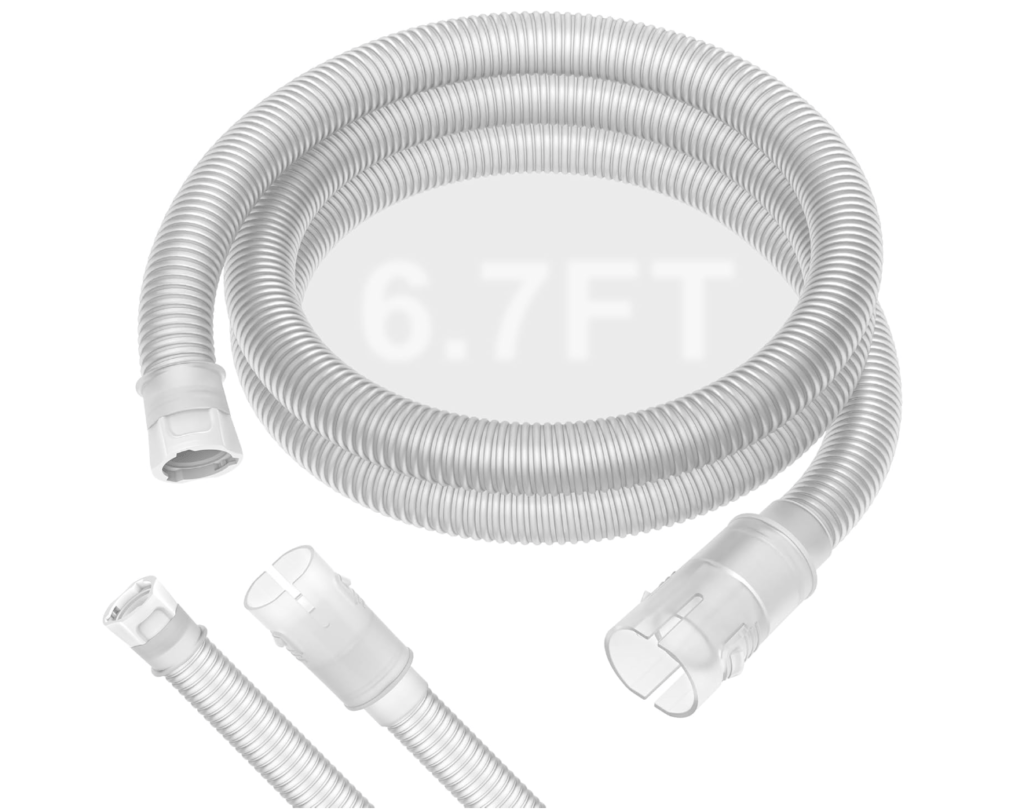
AirMini Tube

Humidifier Filter
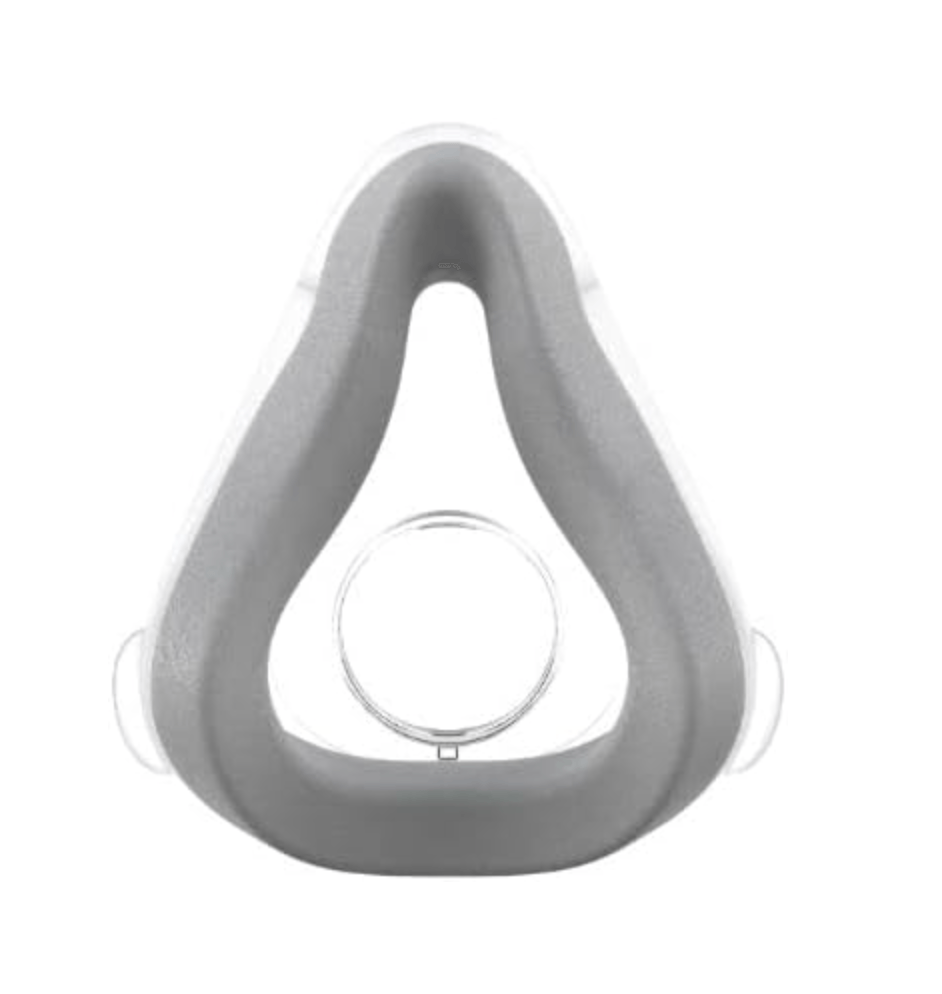
AirTouch F20 CPAP Mask
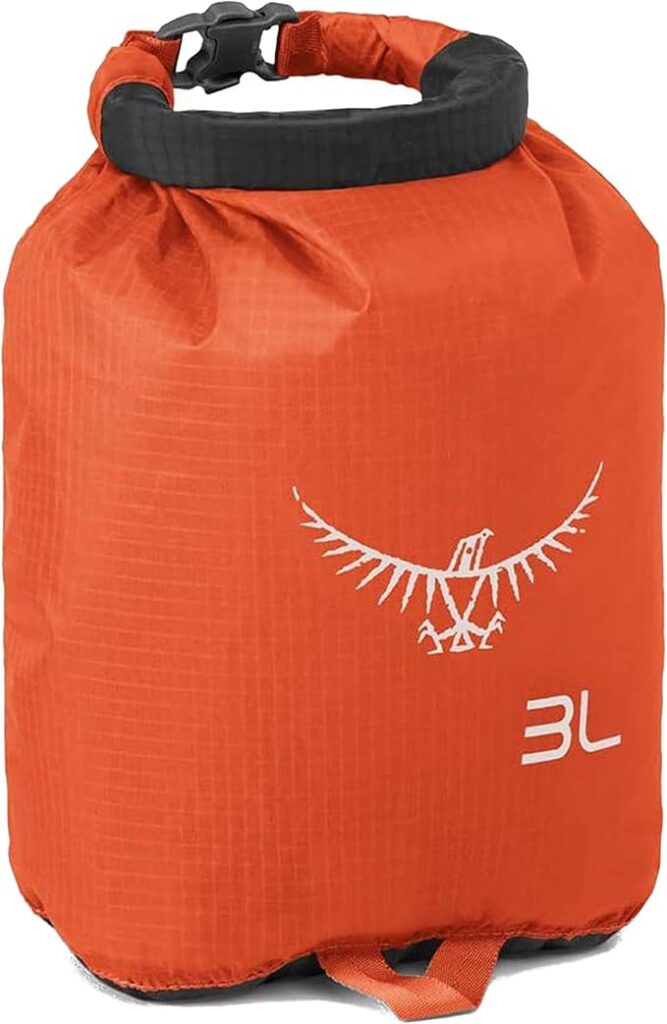
Osprey 3L Dry Bag
Alternative Setups
Easylonger ES720 Brown Version
The total weight of everything combined on my scale for the brown version is 4 lbs 13 oz. This includes the Air Mini, Mask, tube, battery, battery cord, wall plug, CPAP cord (included when you buy the battery bank and weighs less than an ounce), and dry bag. The individual weight of the battery bank is 3lbs 6.4 oz (this includes the cord to charge it) and gives him 36.35 hours (or 8 hours for four nights on a pressure setting of 10). You can read our full review here. This setup is a tad lighter than using the green version below as it comes with a dedicated CPAP cord so you do not need to buy or use the optional cigarette lighter cord.
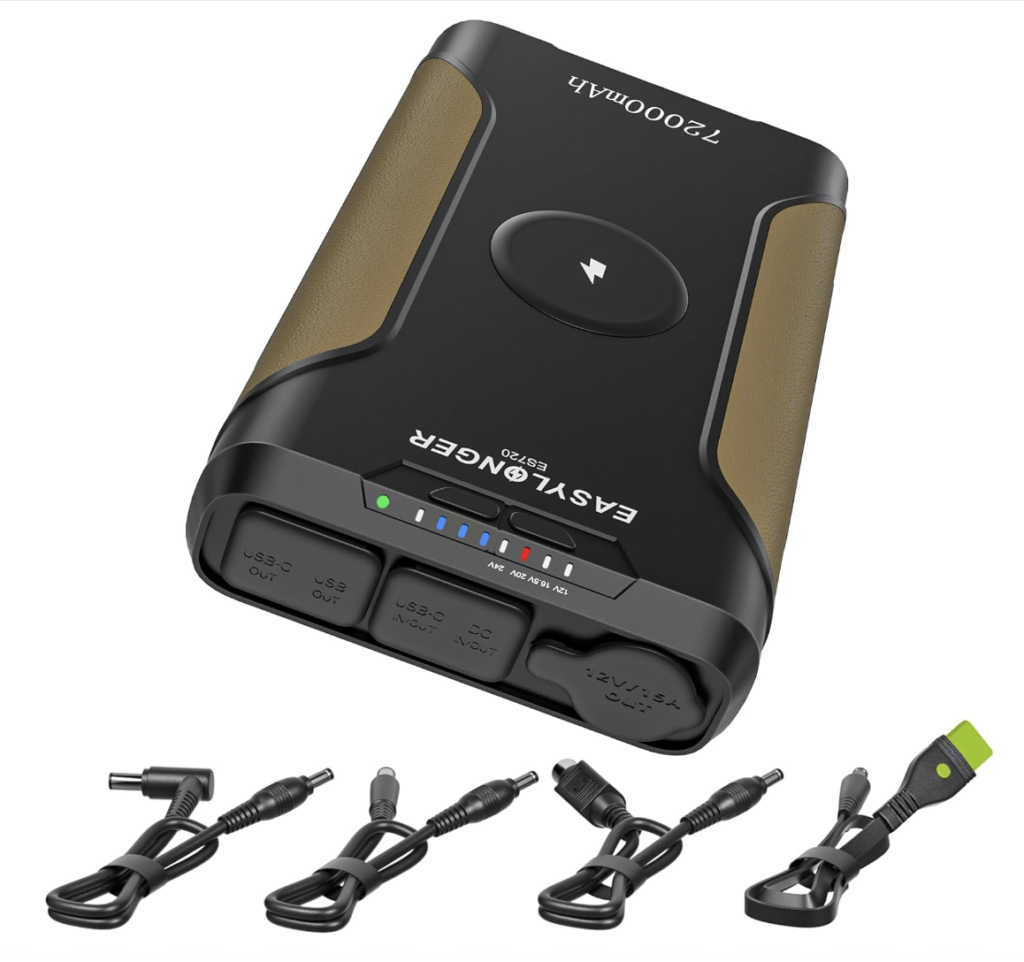
Easylonger ES720 (with cords)
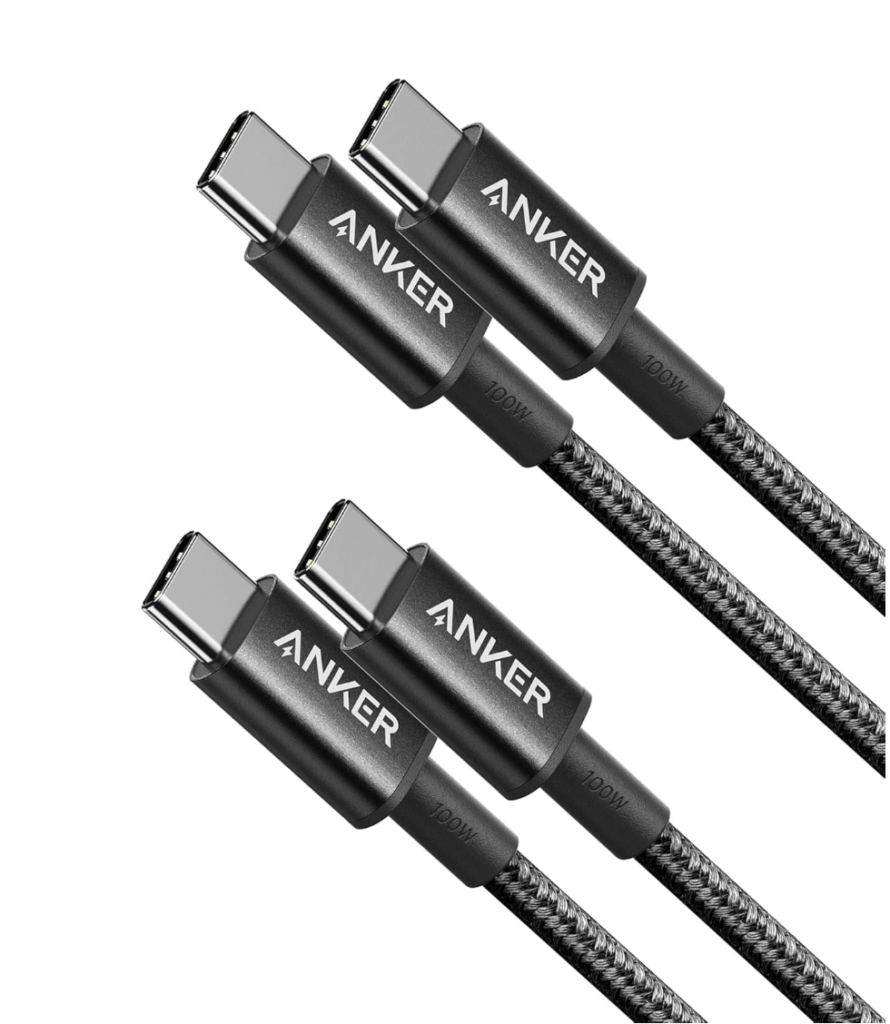
Anker USB-C Cord
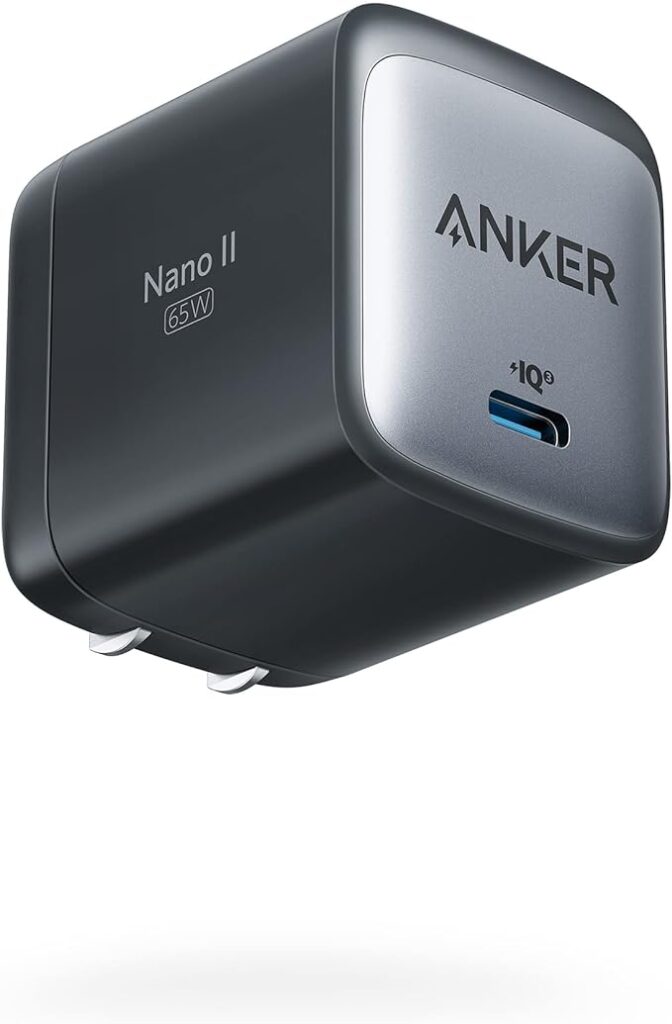
Anker USB C (Nano 65W), GaN II Foldable Charger

Osprey 3L Dry Bag
Easylonger ES720 Green Version
The total weight of everything combined on my scale for the brown version is 5 lbs 1.4 oz. This includes the Air Mini, Mask, tube, battery, battery cord, wall plug, CPAP cord, and dry bag. The individual weight of the battery bank is 3lbs 5 oz and gives him 40 hours (or 8 hours for four nights on a pressure setting of 10). You can read our full review here. This battery bank does not include cords for the AirMini so you will need to buy the optional cigarette lighter cord.
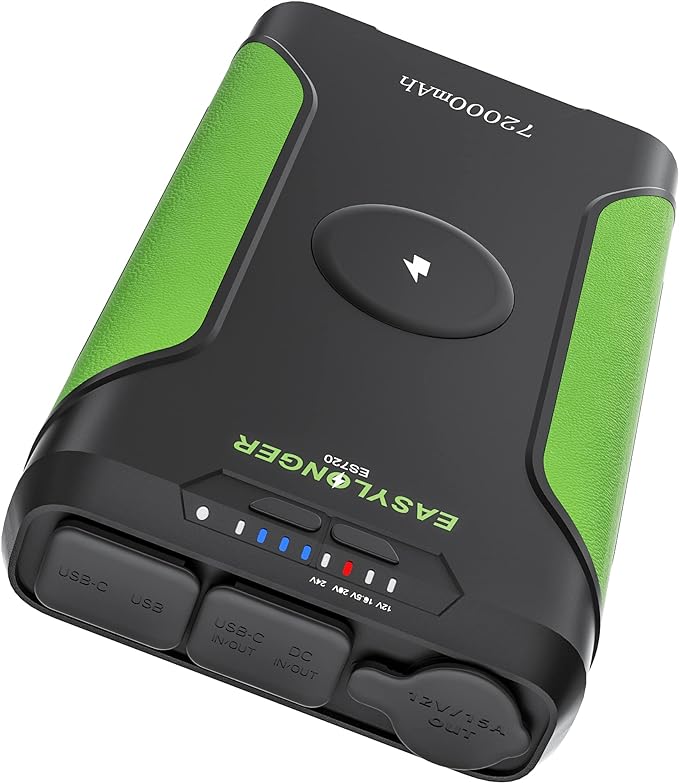
Easylonger ES720

Anker USB-C Cord
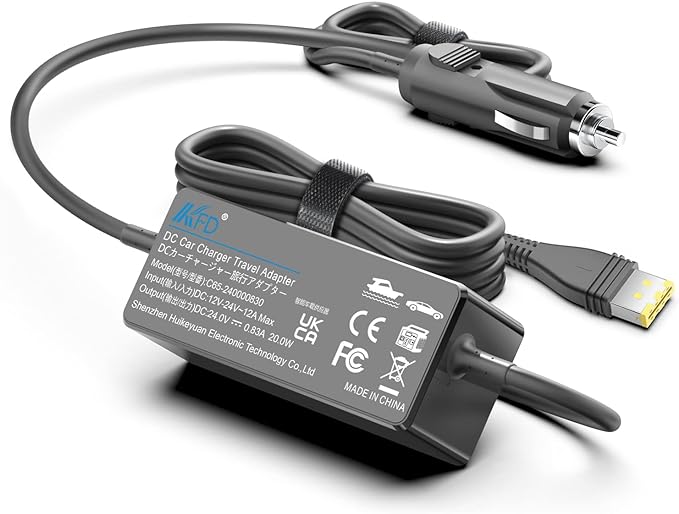
DC Adapter for ResMed AirMini

Anker USB C (Nano 65W), GaN II Foldable Charger

Osprey 3L Dry Bag
Transcend Micro CPAP Setup
As our luck tends to go, shortly after we bought the Mini another lightweight CPAP came on the market. It’s even lighter than the Mini and has its own dedicated battery packs that also seem to be lighter than the options above.
While we have not tested this setup due to lack of funds, I thought I would list it here nonetheless in the event that you are still shopping around.
Transcend Micro
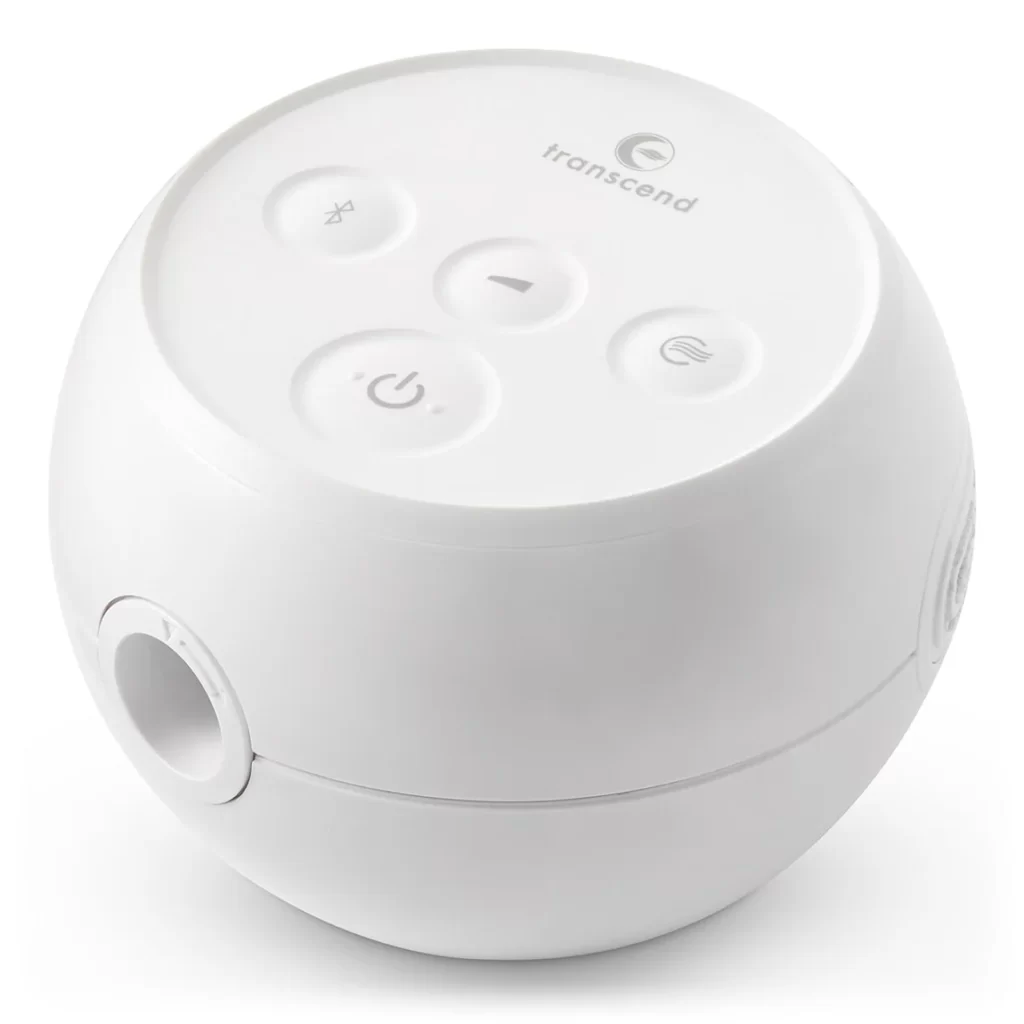
Weight: 0.48 lbs or 7.68 oz
Price: $780
Power Away Battery
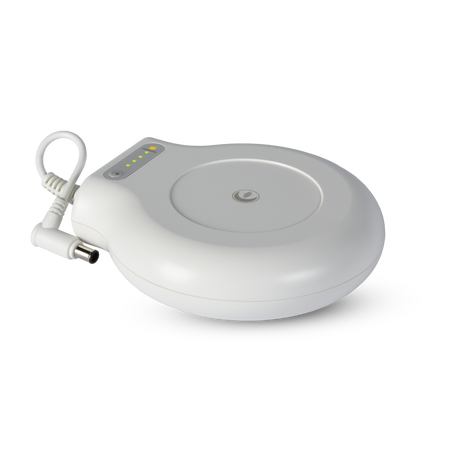
Weight: 1 lb
Price: $350
71 wh, 18 hrs on a 9cm pressure setting or 14-16 Hours at 14cm
Recharge Time: 4 Hours
Things to Note
- The weight does not include the weight of the power adapter, mask, or hose.
- The Micro only works with the dedicated battery bank, from what I can see (so there is no alternative).
- You recharge the battery bank with the CPAP power adapter. This could be an issue if you need to use your CPAP and charge 2 battery banks while in town. I could not clarify whether this has pass-through charging or not, so it is possible you would need to carry 2 bulky cords. Again, I cannot clarify, so if someone has this setup, please comment below.
FAQ About Backpacking with Sleep Apnea and a CPAP Machine
Why Not Just Lose Weight?
A common misconception is that those who suffer from Sleep Apnea are overweight and losing weight will solve it. That is simply not true. My husband was diagnosed with chronic obstructive sleep apnea when he was considered to be within a normal weight range with a healthy BMI, as well as being physically active and fit (he was still active duty Army at the time). While it may be true for a select few that their obesity is causing sleep apnea, it’s not the case for everyone.
Why Not Just Backpack Without It?
Ummm, because he can DIE! That’s not a risk I (nor he) will take. He is rated at 100% by the VA on this alone. It is that severe, and no, he does not snore. He just literally stops breathing.
If you backpack with a CPAP, I’d love to hear your setup and total weight, so leave us a comment below!




great info ihopeto soon retire and have been lookig at options for cpap backpacking…Have even looked at the portabile wind generator would love to hear more of your experience.. thank you
What was the battery that was on the way that came with a different cord to plug into the cpap?
Hi Jacob, it is this one: https://amzn.to/3RCzDkz I am actually getting ready to update this post. It is the exact same as the green one in the post, just brown with CPAP cords.
Your last update to this was in March ’25. Have you had a chance to determine how much run time you actually got out of the Zotec Explore Mini batter?
Yes, he can get 16 hours out of it (2 nights) during the colder months when we tested it (Jan-March). During the warmer months, he can push it but not get another full night, so we will end up buying another one to take with us during our longer backpacking trips. We will have a full review of the Zopec coming out soon. We believe that having two will provide him with a solid four nights of use during the colder winter season and five nights during the warmer seasons.
Great article. Looking to purchase the mini for 5 day backpack trip. However the links to the easylong battery show not in stock. Been looking places other than amazon.
Do you have recommendations ?
Hi John,
I would just keep checking back. They typically don’t stay out of stock very long.
I just purchased. And received.
I totally overlooked that this product is not allowed on airplanes. Im hiking in idaho flying from texas. Cant use.
Now back to square one. Any other suggestions. I have air mini.
The only other option would be purchasing three of the more expensive one(ish)-two(ish) pound units such as: https://amzn.to/4dGRpvi
Just looked at the ES400 Air, it says it is airline approved https://amzn.to/3WGE5QY
Very helpful article. Like your husband, I suffer from severe sleep apnea and have 50% VA disability as a result. My wife and I thru-hiked the PCT and I was miserable (and exhausted) the whole time. We are currently planning another thru-hike in 2025 and need to figure out an effective CPAP option. I plan to carry a Sunjack 15W solar panel to trickle charge the battery during the day, hopefully giving me 4 – 6 days of use between town stops.
That’s our plan when we decide to do the PCT in 2026 (carry a backpacking solar panel). He is also due for a new machine before we leave and we are hoping the VA will give him the Transcend Micro, but we aren’t holding our breath. It will probably be the same machine he has now, even though he won’t be able to use it because we will be backpacking. We learned that they will not read from any other machine, only the one that they give you. Makes no sense. Anyway, let us know if you have any questions! We start our AT thru hike on Feb 23rd, so videos should start coming out shortly after that.
I just found your website and subscribed to your newsletter. I too have sleep apnea – am a little overweight – but my problem is the same as your husbands – I simply stop breathing at night. I have a ResMed machine that is set at 12 and has a water tank reservoir. I am planning an AT thru-hike in 2025 and to be perfectly honest, have been considering going without my CPAP machine. So, all your insight / advice would be extremely beneficial. I’m not opposed to taking my machine – I’m only thinking of the extra weight and already am looking at an overall pack weight with water and food at approx. 35lbs. My current charging battery pack is an Evatronic Portable Charger, 30000mAh – weight = 1.39 lbs. One of my other issues is that I have an implanted heart loop monitor that must be charged every 48 hours.
Your ResMed sounds like the same one he (my husband) uses back here at the house. You’ll definitely want to get the much lighter and more compact Mini or Micro mentioned above. You will also need a battery bank to plug it into (this would be different than the battery bank you already carry). We plan on going into town every 4th night (you may need to plan on every three nights). Logistically it will be more work and more money due to more town stops, but sometimes you just have to do what you got to do to make things work =) We will be posting daily videos while on trail, we start on Feb 23rd so be on the lookout for videos to start coming out shortly after that. Feel free to ask any questions you have!
Hello,
I wish I had found this article before my experimentation phase. I carry a Breas Z1 set at 10 cmh20 and a Renogy 72000mAh 12 volt Power Pack. I believe the same as your husband EasyLonger under a different name. I’m using the DC cord set to 12 volts, the CPAP calls for 16 volts, but the 12v has worked and most likely saves me some battery life. One other item, my first attempt with this battery was a failure, I could only get 5 hours on a charge, I returned it and tried a new battery and it worked.
At home I can get six nights at 7-8 hours per night out of a charge. In August of 2024 a buddy and I did a 5-night loop in Yosemite with two nights above 10,000. The battery performed great, in those 5 nights I also charged my phone and lights on occasion. At this time I’ve taken multiple 2-3 day backpacking trips since March of 2023 and couldn’t be happier with the set up!
Now the question, how do we get from 5 nights to the ability to charge it on the trail? I’ve played with solar and really have not had any luck. What have you found?
Thank you,
Bryan
Additional Info:
Total weight is 4.6 pounds including dry sack, 4’ hose and charging cords for phone and lights. I went with the Breas Z1 because it was reconditioned and half the cost of the Transcend. I’d prefer not to have the additional weight, but love sleeping at night!
We haven’t played around with solar yet. It’s next on the to do list when we finish the AT. If everything goes good we should be on the PCT in 2026 and that’s when we will need it (will also have better conditions to use solar). I’ve been eyeing this one, due to how it folds up and it’s weight https://amzn.to/4fSzOkV and it will probably be the first one we test out. We will also more than likely switch the to the ES400 battery bank as well, just to even the weight out.
I’ve tried a 30 watt and 60 watt solar charger without much luck. I suspect that’s due to the capacity of the battery. The ES400 says it will charge in 3-4 hours with an 80 watt panel. Looking forward to your follow up on the solar. I’ll let you know if I find a good combo as well. Seems we’re thinking along the same lines, smaller battery that works well with solar.
Yes, that’s what I was thinking. Smaller battery bank that may only last one night but you can recharge during the day. Anyway, so, I may have another battery bank solution. 2 days ago this one stopped charging completely. The company is sending a replacement at no cost (they have great customer service), but we are getting ready to head to the AT and scared it won’t arrive in time, so I went back to Amazon trying to find something that would get here in time and ran across a battery bank that for some reason I had never seen before (looks like it was released last year).
It supposedly only weights a pound, can be charged via a USB-C cord (like this battery, so no need for extra DC cord) and for the AirMini looks like 2 nights (16 hours) of use (maybe more). And it’s much smaller. Even if we had to order 2 so he would have 4 nights that is still 1.5 pounds lighter. Might be worth checking out, but I will definitely let you know once we field test it (will probably do a video). https://amzn.to/4ajuMge
The battery dying during a hike is my main concern. Hopefully the new one works well, and lasts. Please keep us informed.
Have a safe trip on the AT! I have a friend starting it in March.
Well we tested it for 200 miles on the Pinhoti and it has been fantastic. I have updated the post with our most current setup. He will be taking in on the AT with us when we head out on April 3rd. Had to leave the trail before we got to the AT because he got a kidney stone that the doctors weren’t sure he could pass on his own. Anyway, headed out there to start the AT here in three weeks, so it will seriously be put to the test then lol.
Hello Nutty Hiker,
Also considering batteries. Right now I’m heavily considering the Medistrom Pilot-24 Lite but I read your thread. How many hours has your husband been getting on the Zopecs per charge? I see a lot of batteries claiming 2 nights etc per battery but then go bad after a year. More details on your experience with the Zopec would be appreciated!
Just came back, sorry for the late response. I’m going to check into the new battery and will be checking back to see if you’ve come across a solar charging solution. My Renogy is still going strong, however I’d love to find a lighter option. Hopefully your husband is doing better, and your AT hike went well?!
We had some hiccups on the AT; I ended up turning it into a LASH, heading back out in April for a month to do another section. =) Haven’t found a solar solution; if you find one, let me know.
One additional thing. the tubing on my CPAP fits my Thermorest, on shorter trips I started using the CPAP to inflate my mattress. You need to fold or hold down on the area by the valve so there’s resistance until it partially filled.
FYI – the is a $10 clear adapter you can buy so any CPAP house will work with the ResMed Air Mini.
I don’t think your husband missed out on the Transcend travel CPAP. My local CPAP store owner advised me against them. She had one in stock but said everyone who has purchased one had issues with them. They are very cheaply made.
Can you post a link to that adapter, please?
I know you were asking Mel, but I did a quick search on Amazon and found this one: https://amzn.to/3DLsqL5
I just ordered it for my husband.
That’s good to hear! We were thinking about buying it to compare, but his setup has worked really well for the 200 (ish) miles of the Pinhoti that we just recently did. We will see how it holds up this next 2200 miles on the Appalachian Trail. I will have to see if I can find that adapter for the hose. It would be nice to not have to buy separate hoses for it.
Thanks for the info. I can add a few data points. I recently bought a Transcend Micro CPAP with its Power Away battery. Testing it at home I easily got 2 nights with almost half the battery left, but I have relatively mild OSA. The total weight for the CPAP, P10 mask, hose, power adapter, muffler, and battery is 2.48 pounds. The weight includes a cotton bag and zipper freezer bag, which are negligible weight. I found that my normal ResMed hose worked fine with the Transcend Micro, as long as I used the muffler (also negligible weight). It isn’t a tight friction fit, but it didn’t leak. If it did, a rubber band would fix that. I’m now searching for a lighter hose, or maybe a way to cut the normal hose in half. I’m doing a 3-day backpacking trip in the Smokies next week and plan to hang the Transcend from the ridge line in my Hennessy Hammock, so a 2 or 2.5 foot hose should be plenty long enough.
The Transcend Power Away battery does not have a power pass-through, nor is it made to allow charging with any other power supply than what comes with the Transcend. They also don’t make it easy to power with any other battery, although I suspect all you really would need is the right cable. It’s a shame they didn’t use USB-C for the power input and charging. But it allowed me to pack under 30 pounds for a multi-day trip in possibly-cold weather, and my hiking buddies will be more kindly disposed toward me when they can sleep.
Thanks for the info, Chuck! That is all really helpful to know. Sorry for such a delayed response; we were out in the woods for a while, haha.
I am happy to have found your blog! As someone with more mild sleep apnea and needs to use the cpap to also not die lol. Your recs are game changer. For a newbie in both the backpacking and cpap world.